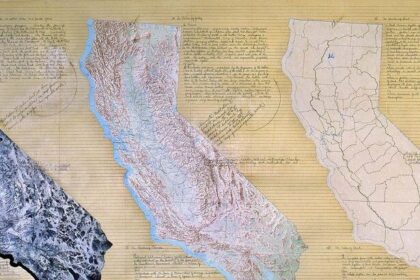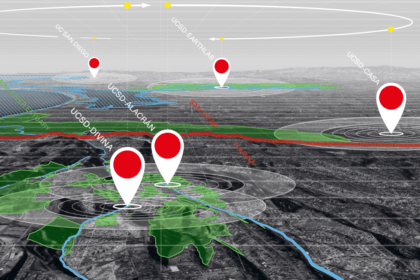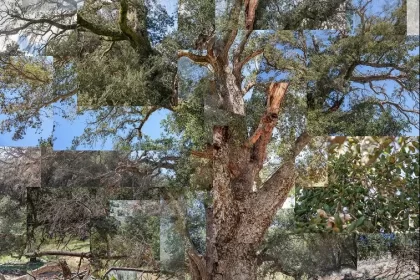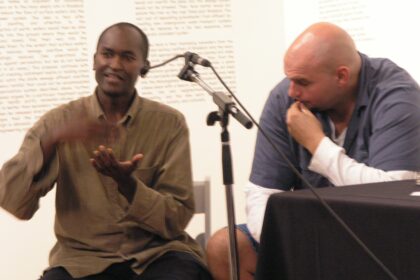Listening to The Web of Life: empathy, dual reality, capacity for experience, and working with a horse
Reiko Goto Collins
In March 2022 I was invited by Tatiana Sizonenko and Newton Harrison to attend an interdisciplinary workshop called Listening to The Web of Life. [1] My presentation began with the Keeling Graph showing the atmospheric concentration of carbon dioxide from 1958 (Figure 1). [2] The relationship between humans producing CO2 and nature has been drastically changed since the industrial revolution. The vertical incline is created by billions of humans while the zigzag line is created by zillions of plants and phytoplankton undergoing photosynthesis.

Every public place consists of silent beings such as plants, insects, wildlife, soil, and air.
-Reiko Goto Collins, 2012 [3]
Between 2016 and 2017, I had an opportunity to develop my thoughts about climate change with a group of women during a series of workshops called the Council on Uncertain Human Futures [4], at the Institute for Advanced Study in the Humanities (IASH), University of Edinburgh. We were part of an international network seeking new lines of thought and practices in response to climate change. The questions began with:
What do you know about climate change?
Why is climate change happening?
What did you learn from climate change?
These questions were addressed to individuals with the intention to elicit personal responses to the global problem. There were 10 female participants: philosophers, educators, scientists, writers, researchers, and artists. [5] We sat in a circle, and everybody responded to each question. The method was a series of personal monologues and deep listening. Sometimes we were asked to write the answers on a piece of paper within a few minutes and put it on the wall to share. In response to the question “what has been lost?”, I was thinking about Pittsburgh where I used to live and work. [6] The place was world-famous for the steel industry. During the industrial era the sky was dark even during daytime, and the air was polluted by steel and coke plants. There was no fish in the rivers, no birds in the sky and no trees on the hillsides. The year 1926 was the climax of steel production, then, the industry moved to other places. Enormous derelict lands and many economically distressed communities were left along the three rivers. [7] I wrote, “three things were lost: one, trees with understory, two, species and three, relationships with non-human living things and the environment”. I asked myself, “how can we shift our perspective from nature as background and human activities as the foreground?” I start thinking about empathy that helps me to understand the background and foreground relationships.
Empathy
Empathy is interpreted as ‘心 – kokoro’ in Japanese. It is an ability to understand the other. It takes an important role in communications. I rely on Edith Stein’s phenomenological theory of empathy. She understands empathy as an act of perceiving in which we reach out to the other to grasp their state or condition. Empathy has a body and mind relationship. It consists of one’s emotional and physical experiences directed towards something foreign rather than something familiar. [8]
When I see a person’s sad face, I empathically feel the sadness of the person. A sad face is the outside of sadness. For instance, Tim, my partner looks reluctant dealing with garden chores on the weekend. I start helping him weed, cut grass and water. Our neighbours also come out to join the activities. Tim becomes happier and more excited to work on the chores. The gloomy feeling seems to be temporal, and when his emotion changes, the gloomy face disappears.
Stein also talks about sympathy that is based on self-interest. Sympathy reflects one’s current experience and intellectual understanding. Empathy reaches beyond the self, but without losing or forgetting oneself, resonating with the feeling of the other and amplifying it. Empathy and sympathy are both altruistic mental activities that help us to understand the other.
Stein said, “We not only see such vigor and sluggishness in people and animals, but also in plants”. [9] For an example, Figure 2 was taken in the Central station in Paris in May 2013. The shrivelled leaves indicate wilt caused by lack of water. The plant looks stressed and unhealthy. It is a shift if the plant becomes healthy again. Empathic attention to a wilted plant may motivate people to get some water for the plant.

Foreground and background relationship
From southern Alaska
To northern California
North America’s last great temperate rain forest is dying
– Helen Mayer Harrison and Newton Harrison, The Serpentine Lattice, 1993. [10]
The Harrisons have a way to deal with shifting our perspective from nature as background and human activities as the foreground. The Serpentine Lattice is embedded in the context of social and economic changes that have affected not only the trees and wildlife, but also the forestry workers who were no longer fit for services as large ecosystem resources and economic systems changed, or even failed. The Harrisons resort to metaphorical concepts to present these issues.
The installation [11] consists of an enormous west coast map, a handout of the artists’ lyrical and conversational text, and slide projection of the redwood forest; it focuses on forest, understory, and clear-cutting. The serpentine is a metaphor of the coastal rainforest and the ecological system between Vancouver to Northern California. It consists of numerous watersheds (Figure 3). The lattice represents each watershed, and the green lattice represents the wellbeing of the watershed, while the skeleton like lattice indicates clear-cutting, an environmental devastation in the watershed.
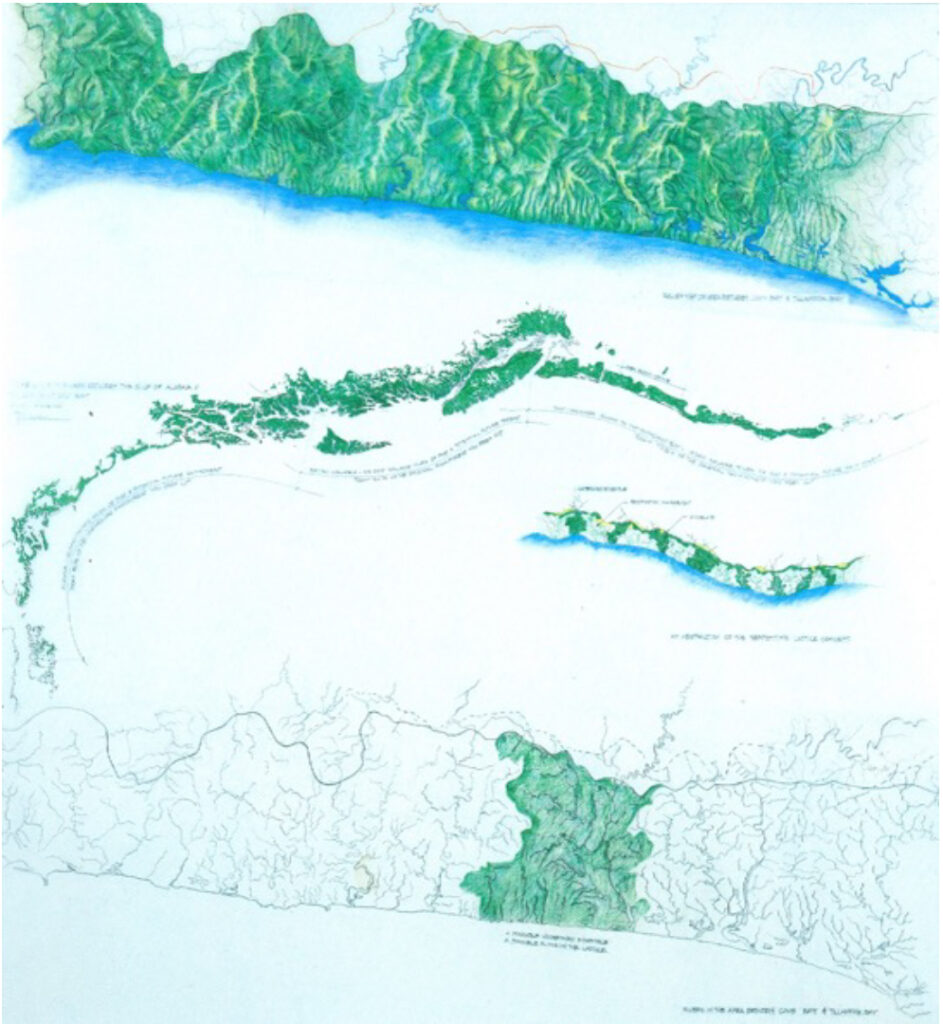
Here is an argument between Newton and I. Newton teaches me about metaphor using an example of a flood plain and dike.
Reiko Goto: Dikes are no metaphor – they are real structures!
Newton Harrison: Yes, they are a metaphor. I will tell you why. Metaphors become physical. It is physical. A car has a metaphor of transportation built in it. The metaphors force the design. The design of the dyke begins with a metaphor. The metaphor says, “The river is destroying the town. I will make the dike. [12]
A metaphor is not an imaginary story. It can be based on an incident or an experience. Seeking a meaning, moral, and value of a story makes a metaphor. A metaphor that is driven by empathy projects yourself onto someone or something else. Empathic projections are often found in folklore and myth in every culture. In the story Tsuru no ongaeshi [13], Yohei, a young hunter saved an injured crane in the snow. Later, a young lady named Tsuru came to his village, and they got married and had children. Tsuru weaved special fabrics that were well valued in the city. Yohei became a rich man and asked Tsuru to produce more fabric. Tsuru lost weight and looked unhealthy. Yohei peeked into her room and found a crane was pulling out her feathers one by one to weave the fabric. Tsuru handed him one last fabric and told Yohei she would leave the family as he had seen her true character.
The story begins with an act of empathy and ends with a sense of sadness that is based on an empathic understanding of the reasons why Tsuru arrived and returned to her life as a crane. This more-than-human narrative is deeply embedded in Japanese culture. Shinto is Japanese animism and ancestor belief. Spirits of living things travel between the natural world and human world. This metaphorical process allows us to understand the other, including non-human species.
The Harrisons invented a metaphorical method called ‘field of play’’. They said, “Most early art and design training works with field relationships: figure / ground, foreground / background, perceptual training to help develop abilities in painting, sculpture, and architecture. For the painter, the field of play becomes a canvas, the physical boundaries are the edge of a canvas, the conceptual boundary conditions have to do with depth perception and field perception and course, then, formal relationships and whatever narratives the artist wishes to convey.” [14] Once we see the ‘Field of play’ moral relationships, empathic experience and body-mind relationships gain clarity. By exchanging the foreground and background (nature and culture for instance) the Harrison’s discovered they could flip a metaphor allowing them to think differently. In The description of the Serpentine Lattice the metaphorical flip is clearly stated, intention changes and new relationships emerge:
Now
If
10% of the proposed eco-security system funding
Or 5.7 billion dollars yearly
Could be put at the disposal of
the rain forest of the Pacific Northwest
For a 25 year period
Then perhaps 140 billion dollars
Could be made available
For the regeneration of
These forests
Rivers
Wetlands
Creating job opportunities
Far in excess
Of those that would be lost
By limiting lumbering
Then
Ground would be reversed
So that
The ecosystem
Becomes the field
And human use
The figure within it
Then
The gross national ecosystem
Would take its place
Privileged
Appropriately
As the field within which
The political systems
Social systems
And
Business systems
That comprise
Our eco-cultural entity
Can exist.
-Helen Mayer Harrison and Newton Harrison, The Serpentine Lattice, 1993.
In this case ‘metaphorical flip’ takes the subjunctive mood to express hopes and imagined outcomes. It allows human communities to intervene in the natural system. ‘A metaphorical flip’ is like light and shadow. It reveals or creates a dual reality. A green lattice and skeleton like lattice are two kinds of metaphors or two kinds of realities.
In the Harrisons’ Sixth Lagoon: on Metaphor and Discourse (1985) [15] (Figure 4) there is a mirrored image of the Colorado River watershed including the Salton Sea. If one metaphor is an ecologically dysfunctional watershed, then, the other metaphor can be a functional one. The image reminds me of what Charles Sanders Peirce said, “…there can be no resistance without effort; there can be no effort without resistance. They are only two ways of describing the same experience. It is a double consciousness.” [16] Peirce’s double consciousness is a dual reality.

Dual reality and capacity for experience
Dual reality is not only imagination, but it can also be found in the natural environment. For example, Caledonian pine, known as Scots pine (Pinus sylvestris), grows differently in different environments and circumstances (Figure 5). In forest plantations the competition makes them grow tall and straight. In open areas their branches spread out to catch more sunlight. Both natural events and human actions affect the shape of the tree. The dual reality of the pine tree has two different values: straight-utilitarian value and curvilinear-aesthetic value. Understanding two different values of Caledonian pine can give us choices in how we relate with the tree.

A dual reality is not always visible. Oscar Wilde says, “A thing is, according to the mode in which one looks at it.” [17] We are all too deeply involved in our own interests. ‘Capacity for experience’ is another concept that makes us aware of our own ignorance. Charles Sanders Peirce said, “Very different is the case of the inexperienced and the experienced person. The person with a depth of experience takes on a breadth of information, while the inexperienced may gain nothing. [18] We learn things based on known and unknown. For instance, foal slippers are nature’s way of protecting the mare’s uterus and birth canal during pregnancy and foaling (Figure 6). [19] Once the foal is standing, the capsule wears off quickly, exposing the hard hoof beneath. The relationship between the mare and fetus makes us think about the sensitivity of life and providence.
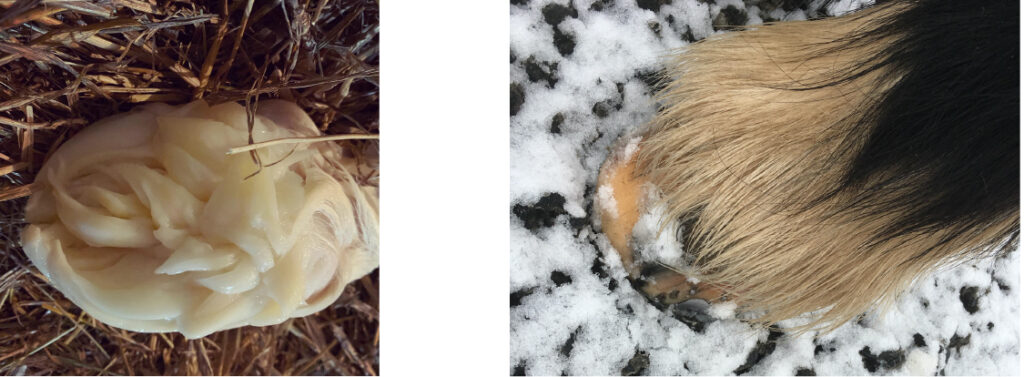
Working with a horse
In 2011 Tim and I moved to Glasgow Scotland. I was looking for opportunities to build empathic relationship with others. I chose a native horse because it was an herbivore with its own relationship. A relationship to Scottish landscape and vegetation, as well the significance of communicating ‘no’ with a half-ton of body language. ‘No’ would make me think about the reason why it refuses and how to communicate better.
His name is ‘Darkness’. He is a black Irish cob, a gelding, 14.2 hands tall, with a long mane and feathered feet. He was a riding school horse and I leased him twice a week for two years until 2012, when he became our family member. Building an empathic relationship with a horse has become a process of developing a new language for me. This two-way communication relies on body language that is more horse than human. Below I describe a series of artworks that are based on our exchanges, through body language and attention to the land. The work is a process of mutual empathic development that could only have been done with Darkness.
There is a Scottish folklore that talks about a magic bridle used to catch a Kelpie, a mythological water horse. A Kelpie disguises itself as a horse. Once a person is on it, the horse starts running faster and jumps into a loch. There is another version of the folklore that I find more interesting.
There was a farmer in Knapdale, [20] they said he had a way of catching a water horse that was in a loch near him, when it would come out on the land; when he would get it in bridle, he could work it like any ordinary horse, and when the work would be done, he would let it go off to the water again. [21]
The farmer had wisdom, he knew how to catch the water spirit using a taod gaoisdei a magic bridle made of birch twigs and horsehair. The relationship seemed to be maintained over seasons and years. I was intrigued by the story. What did this bridle look like? Why did it entice a Kelpie? How did the farmer handle the mythical creature and make it willing to work? I wanted to explore the metaphor, and I decided to make the bridle. I went to a birch forest in early spring. The trees did not have any leaves yet. I found many broken branches under the trees and gathered them. Making a long rope requires a gadget that would allow me to twist continuously. I used the doorknob in our flat. The birch twigs were surprisingly soft and supple (Figure 7). I tested the bridle with Darkness. The taod gaoisdei did not break. He seemed to be proud wearing it (Figure 8).

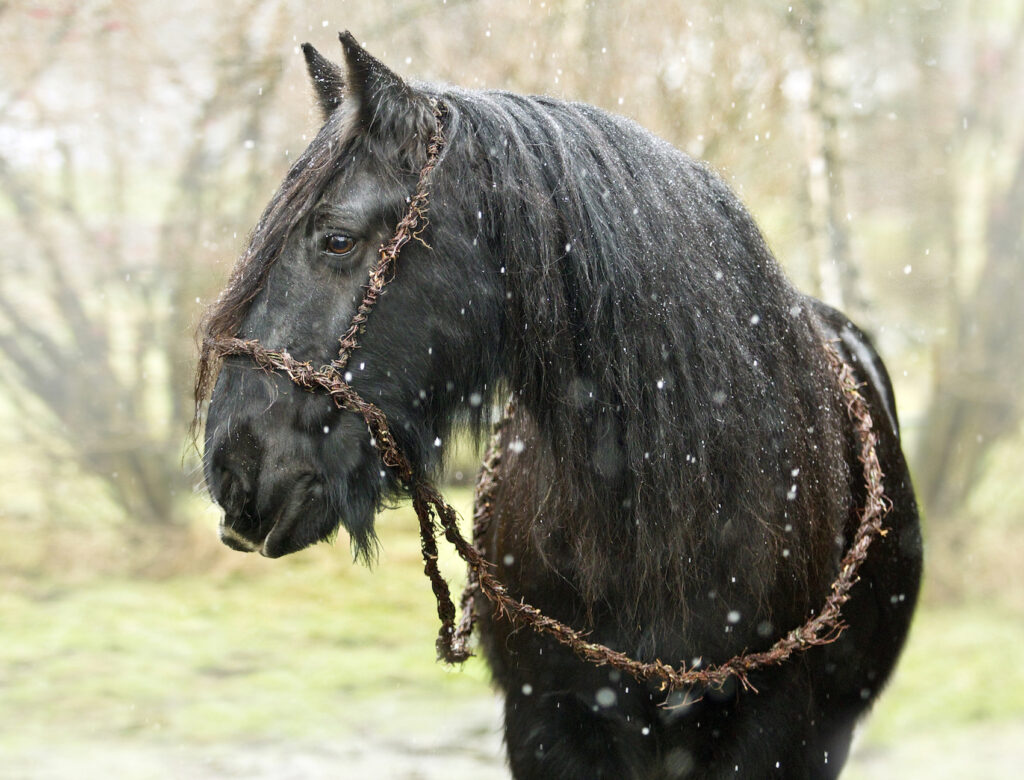
Horses communicate with people through two mental activities; one relies on a body and mind relationship, and the other relies on intelligence. They seem to have long term memories. I call Darkness from the outside of the field, and sometimes he replies loudly (Figure 9). [22] Did he recognize my voice, his name, or both? I normally spend 3-4 hours every day riding, walking, or exercising and taking care of him. He lives in a stable near Mugdock Park in Milngavie, Glasgow. In the summer he stays in the field almost 18 hours. In winter, he goes out for 6-8 hours. Either case I am not with him all the time and I do not know what he is doing when I am not with him.
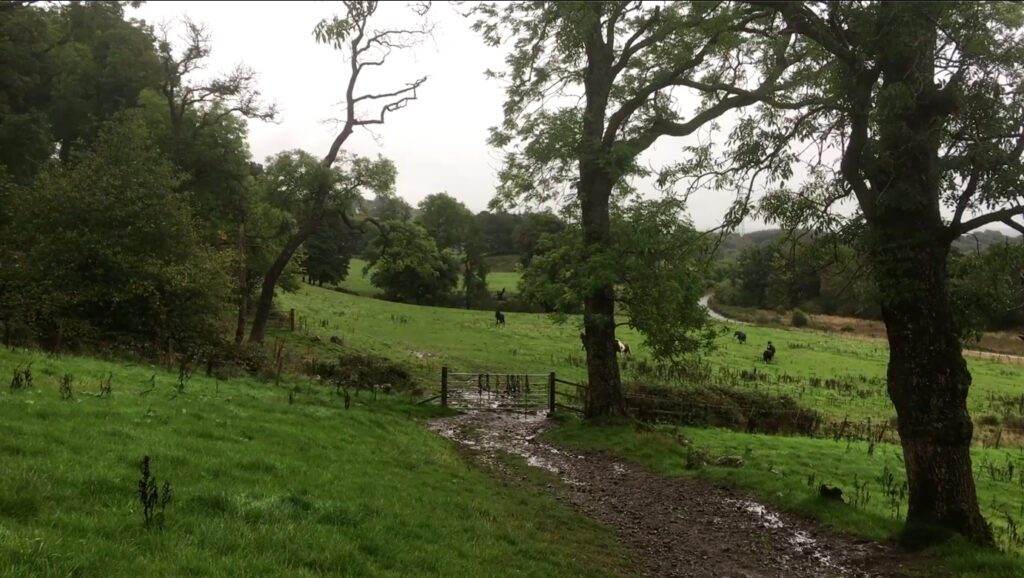
Tim and I decided to observe Darkness when he was out overnight in one of two ten-acre fields with the herd. We used a global positioning system (GPS) to track his movement (Figure 10). Over 120 drawings were made between the summer solstice and winter solstice in 2018 (Figure 11). Somebody said the drawing looked like constellations with subtle colours of dots and lines. The blue indicated the areas where he stopped more than 20 minutes, the red dots indicated 10-20 minutes, and white dots were less than 10 minutes. Some blue straight lines indicated the horse was moving through the area very quickly. They were patterns of the horse’s movement and how the horse was moving freely in the field amongst different vegetation during the nights. The drawings were mounted on a wall all together. I added some images of Darkness eating, laying down, rolling, running, drinking water, and playing with other horses. I titled the piece Lair, a place for animals to live in nature.

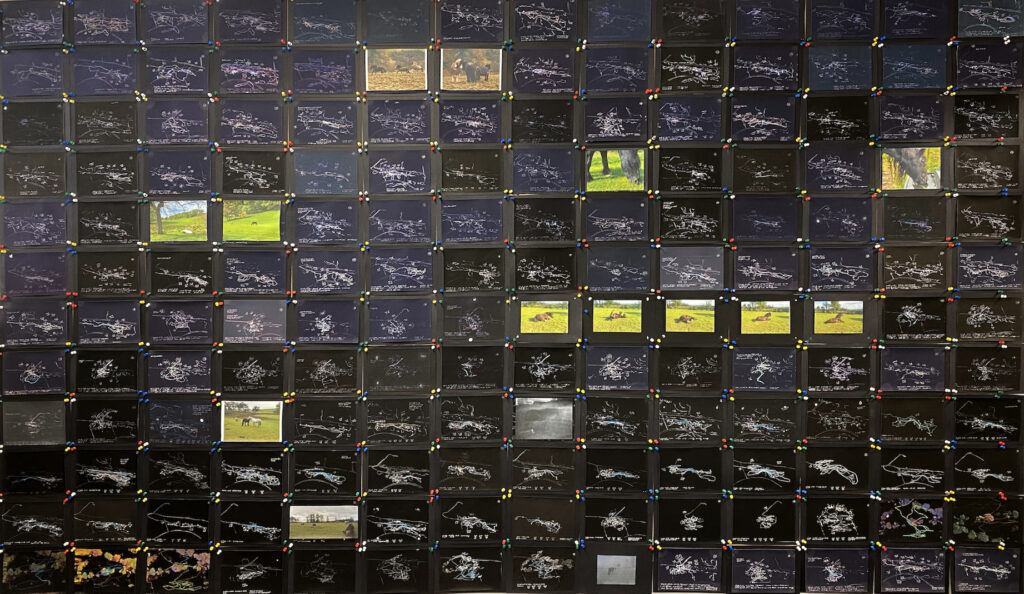
Another artwork, titled What he likes (2021), consists of prints of the plant specimens he eats. Darkness feeds on a range of vegetation that can be found across the landscape. As we began to pay attention to his desire to eat various plants, we have learned his appetite changes throughout the year (Images 12 – 14). Some of the specimens are his favorite, others are seasonal plants he wants to eat only for a week or two. Darkness knows what to eat and what not to eat, based upon visual indications and a strong sense of smell and taste.
It was Tim who first noticed his interest in common hogweed, also known as cow parsnip Heracleum sphondylium (Figures 12 and 13). It was at the height of summer in 2019 that Tim saw Darkness’ fascination with this plant. As they walked along a quiet road Darkness kept pointing out this plant. When they stopped, Darkness striped all the leaves off the stem, then clipped the flowers one by one creating a salad bowl of sorts in his mouth and stood still to chew it. He had quite an appetite for this, but that only lasted for a few weeks. Despite what looked (to us) to be healthy and hearty plants that would be good to eat – he was no longer interested. The first year it was an anomaly, when it happened again and again each year at the same time of year, lasting only a few weeks. We started to pay attention to other changes.
Marthe Kiley-Worthington, who works on animal behaviour, is clear that “knowledge of field botany is crucial to [a horse’s] survival in the natural environment. Learning to distinguish different plant species, . . . which taste nice, which make you sick, is vital to learning what to eat and how to eat it.” [23] I have started looking at some plants differently through the horse’s interest and intelligence. I am convinced Darkness recognizes the plant when it is ready to eat and when to stop eating it. He has an experiential understanding that is based on senses that may be more acute than my own. This has initiated my own interest in plants’ chemical processes and available nutrients that ‘might be’ informing his seasonal appetite.
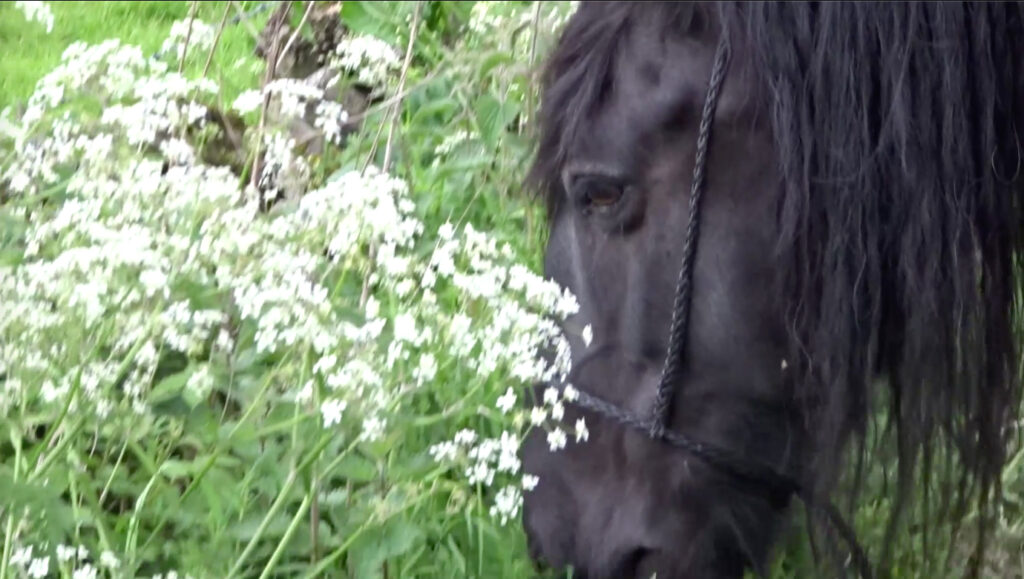
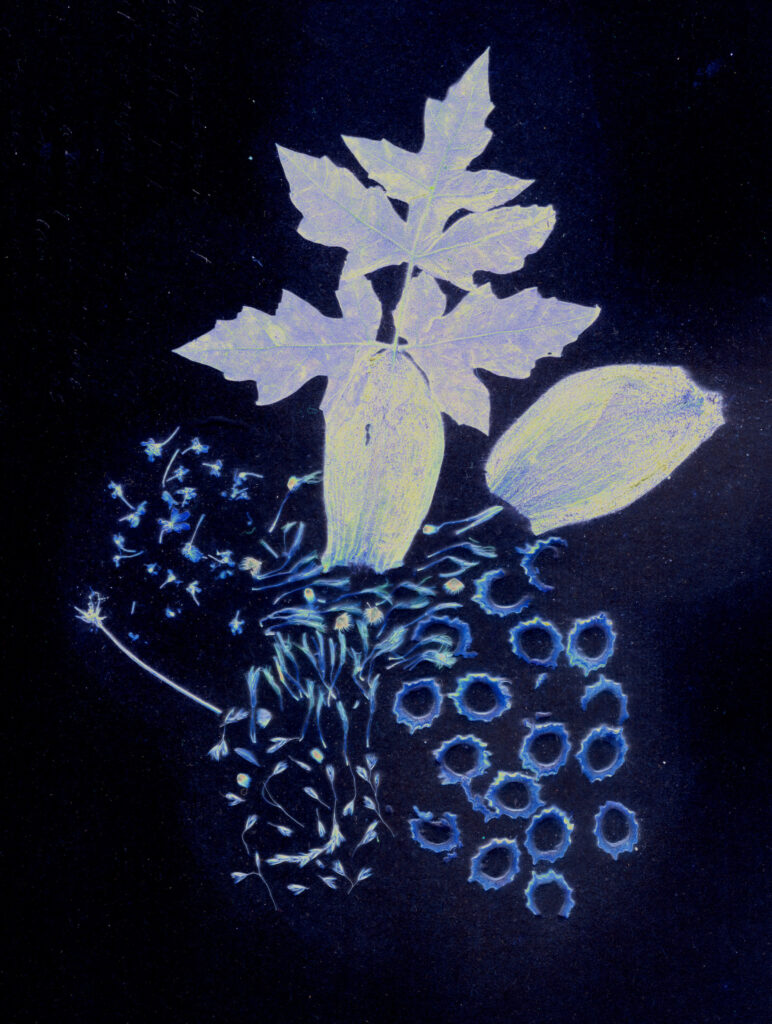
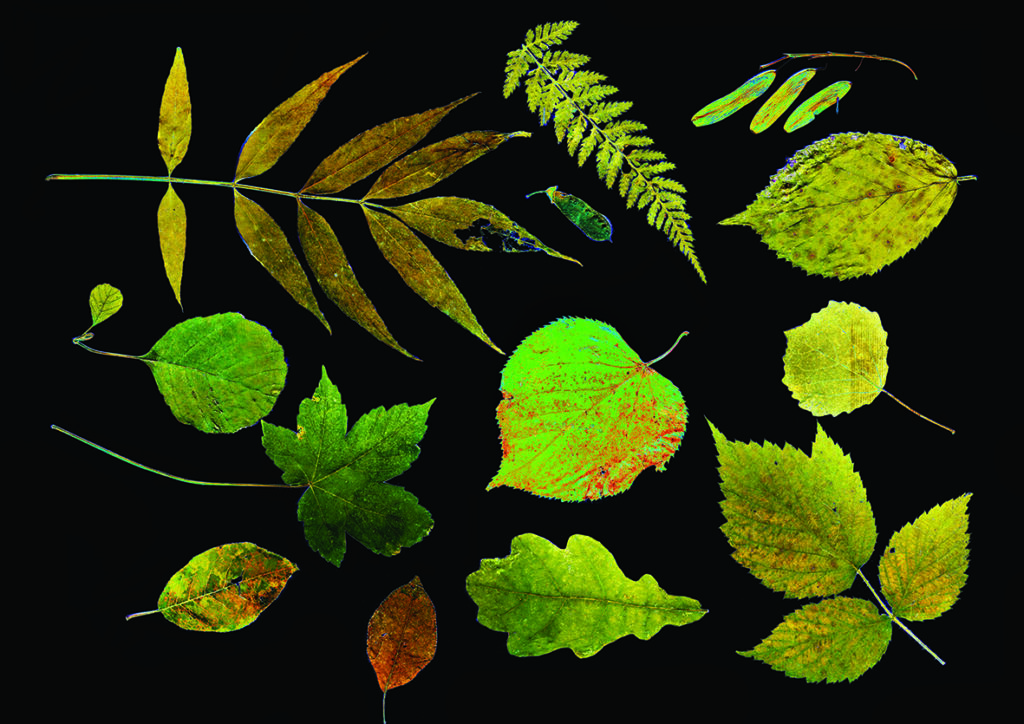
Conclusion
This paper began with a question “How can we shift our perspective from nature as background and human activities in the foreground?” Empathy is the key element to understand more-than-human others. Empathy is not an intellectual activity. Following Stein, empathy is an act of perceiving in which we reach out to the other to grasp one’s state or condition. It involves one’s emotional and physical experiences. Empathy is recognised in the examples of a ‘sad face’ and a ‘wilted plant’ that have a background and foreground relationship. In that case, lacking water is a temporal condition for the plant. Watering is an action that makes a shift. It can be evoked by empathic understanding.
The Harrisons’ metaphorical flip promises two kinds of reality. One metaphor can be the creation of what is not there yet. It is dual reality that can be perceived as known-unknown and noticed-unnoticed. We learn when we notice things we do not know.
In the story of catching a Kelpie with taod gaoisdei, the softness and suppleness of the birch twigs are the strength of this harness. The farmer’s passive approach can change the demonic character of a Kelpie into a tamed horse-like creature. The Kelpie comes back every year because the farmer releases the horse. This empathy driven exchange is a metaphor that embodies an interaction with nature that informs my thinking about the dual reality of climate change.
A dual reality gives choices. Lair began with an idea to extend our physical ability to observe the horse’s movement during the night by using GPS. Each drawing could be interpreted as data. The drawings were also maps that indicated the movement of the horse in relation to place. Some horses live in a much more constrained environment. Lair creates a metaphorical figure of the horse roaming around the field freely.
What he likes was an exploration of plants that is led by a horse’s appetite and interest. Tim and I realized Darkness was selecting seasonal plants, knowing their readiness to be eaten, and communicating his interests to us when he saw them. He stopped and pointed to the plants, asking permission. It might be the changes to chemistry and nutrients that occur in the plants over time. Perhaps these were indications that only the horse could perceive, see, smell or taste when the plants came into season. Capacity for experience, known and unknown processes through listening to the other is a transformational process. It makes us engage with the landscape differently.
Empathic relationships with living things are relationships that can be built, and the building process consists of listening, asking, noticing, and responding. A shared environment makes it possible to have this kind of communication. This kind of communication does not rely on human language. It can be translated as stories, poems, essays, and philosophical writings that intend to go beyond our own subjectivities.
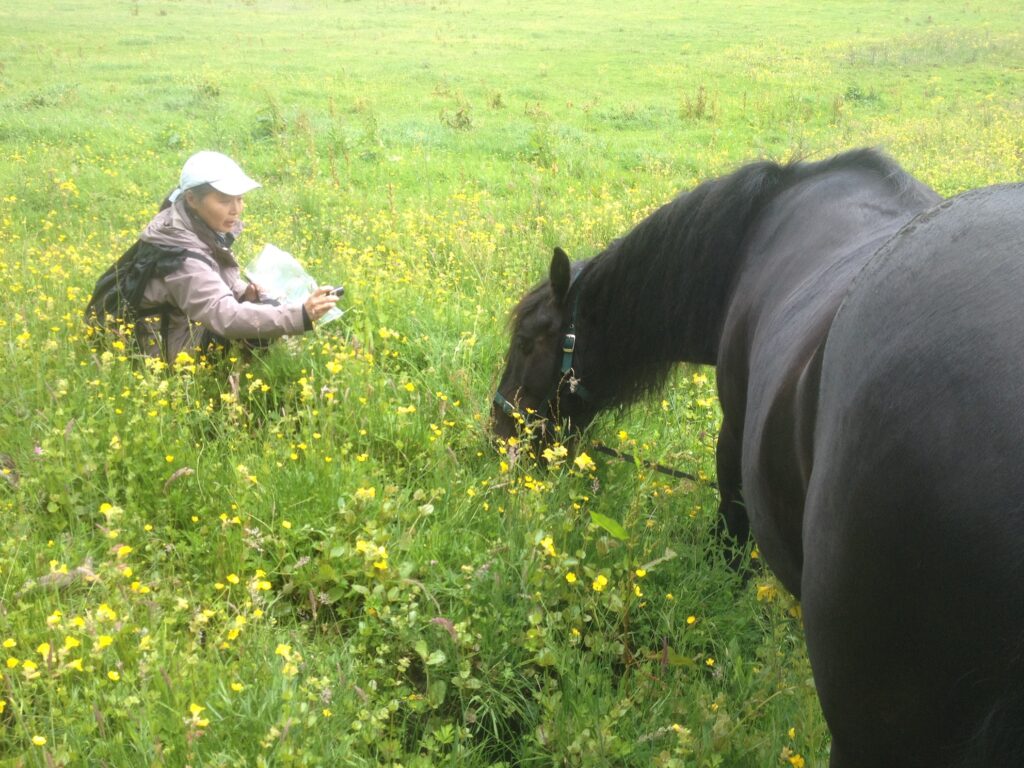
Reiko Goto Collins is an environmental artist and a principal in the Collins + Goto Studio in Glasgow Scotland. She is a Distinguished Research Fellow at the Studio for Creative Inquiry, Carnegie Mellon University (2005 – present). More recently she was appointed as an international associate of the RMIT Arts and Ecologies Research Network (AEGIS), in Melbourne Australia. She is a board member of the Hamiltonhill Claypits Local Nature Reserve (2016 – present). Goto’s practice is based on empathic relationships with living things. Her philosophical ideas about empathy began with a study of Edith Stein’s writing (1989) and more recently with Charles Sanders Peirce (1992, 1998). Goto’s practical research has occurred over three decades of work in relationship with, and caring for a range of creatures. She has spent the last ten years with a horse. Goto is also interested in trees and the environment.
Notes
[1] Listening to The Web of Life is an interdisciplinary workshop that was organized by Tatiana Sizonenko working with La Jolla Historical Society. The workshop was in preparation for an upcoming exhibition about Helen Mayer Harrison and Newton Harrison’s California Works. The title of the workshop was provided by Newton Harrison.
[2] The Keeling Curve (2022), National Geographic: https://education.nationalgeographic.org/resource/keeling-curve [accessed 30 December 2022].
[3] Reiko Goto Collins, Ecology and Environmental Art in Public Place, Talking Tree: Won’t you take a minute and listen to the plight of nature? PhD diss., Robert Gordon University, Aberdeen, Scotland, 2012.
[4] The Uncertain Human Future Council was led by Sarah Buie, a convenor at the Higgins School of Humanities, Clark University, United States.
[5] Emily Brady, Reiko Goto Collins, Alice Hague, Wallace Heim, Rachel Howell, Pauline Phemister, Francoise Wemelsfelder, Wendy Wheeler, Christine Wilson.
[6] Reiko Goto and Tim Collins lived and worked in Pittsburgh between 1993 and 2005. They were research fellows and worked on two environmental projects: Nine Mile Run Greenway Project and 3 Rivers 2nd Nature at the STUDIO for Creative Inquiry, Carnegie Mellon University, United States.
[7] The Monongahela River, the Allegheny River, and the Ohio River.
[8] Edith Stein, On the Problem of Empathy. Translated by Waltraut Stein. (Washington: ICS Publications, 1989).
[9] Ibid, p. 69.
[10] Helen and Newton Harrison, The Serpentine Lattice, 1993, Douglas M. Cooley Memorial Gallery, Reed College, Portland, Oregon: https://theharrisonstudio.net/serpentine-lattice [accessed 8 August 2022].
[11] The Serpentine Lattice, an installation at the Douglas F. Cooley Memorial Art Gallery of Reed College in Portland Oregon in 1993.
[12] Ibid, p.70.
[13] Tsuru no ongaeshi, a Japanese folklore. ‘Tsuru’ means crane, and ‘ongaeshi’ means a debt of gratitude.
[14] Helen Mayer Harrison and Newton Harrison, “Public Culture and Sustainable Practices: Peninsula Europe from an ecodiversity perspective, posing questions to Complexity Scientists”, Structure and Dynamics, 2(3) (2007): http://escholarship.org/uc/item/9hj3s753 [accessed 19 December 2022.
[15] Harrison, H.M. and Harrison, N. (1993), The Lagoon Cycle : https://theharrisonstudio.net/wp-content/uploads/2011/03/botl_part6.pdf [accessed 8 August, 2022].
[16] Charles Sanders Peirce, “Sundry Logical Conceptions?”, in The Essential Peirce, Selected Philosophical Writings, Volume 2, 1893–1913 (Bloomington: Indiana University Press, 1998), p.268.
[17] Oscar Wilde, The Soul of Man and Prison Writings, ed. Isobel Murray (Oxford University Press, 1990), p.158.
[18] Charles Sanders Peirce, “What is a Sign?” in The Essential Peirce, Selected Philosophical Writings, Volume 2, 1893–1913 (Bloomington: Indiana University Press, 1998), pp. 4-10.
[19] Foal Slippers, Willow Way Farms, Facebook post, March 2, 2022: https://www.facebook.com/willowwayclydesdales/posts/foal-slippersthis-image-depicts-the-soft-rubbery-tissue-known-as-a-capsule-that-/4884888141602235/ [accessed 30 December 2022].
[20] A rural district of Argyll and Bute in the Scottish Highlands.
[21] Maclagan Moss: 8972, from J. Sinclair, Furnace, Loch Fyne (Le Borgne, 2002), pp. 273-4.
[22] Collins & Goto Studio, Darkness replies, as I call him from the hill (2022): https://vimeo.com/786190509 [accessed 4 January 2023].
[23] Marthe Kiley-Worthington, Horse Watch, What It Is to Be Equine (London: J. A. Allen, Robert Hale Ltd., 2005), p. 229.








